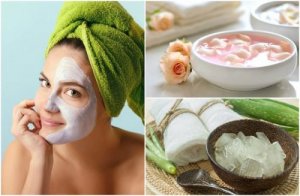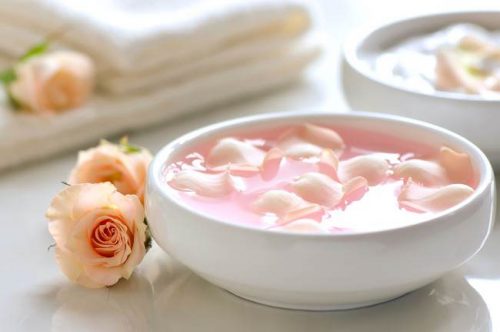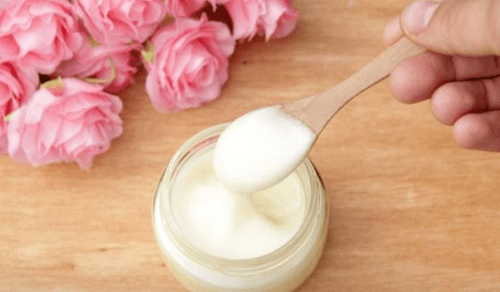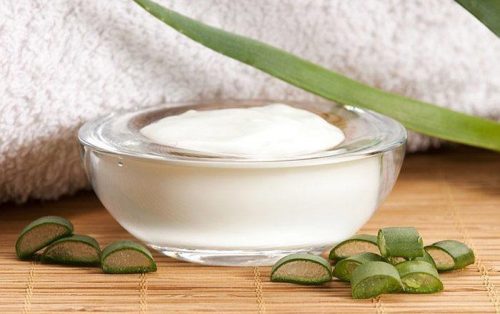The 4 Best Facial Peels to Remove Dead Skin Cells


Reviewed and approved by the doctor Karla Henríquez
A peel is a type of exfoliation with the purpose of removing dead skin cells in order to make the oxygenation process easier. This helps keep your skin soft and moisturized.
This kind of treatment is popular in spas and beauty salons. This is not just because it’s a simple way to deep-clean your pores, but also because it prevents premature aging.
Peels bring together ingredients with acids and antioxidants that regulate your skin’s pH, reducing your likelihood of seeing blemishes.
Plus, some peels contain natural ingredients that are perfect for nourishing a healthier-looking face.
Fortunately, you don’t have to pay an arm and a leg to get the benefits of a facial peel. All it takes is a few minutes a week to make the best facial peels in your own home.
Get excited; they’re great!
Best Facial Peels Made with Natural Ingredients
1. Milk, marigold, and rose petal facial peel

With its special combination of gentle ingredients, this facial peel is ideal for people with sensitive skin and one of the best facial peels there are.
It contains lactic acid, antioxidants, and antibacterial compounds that help remove impurities from your skin to keep acne away.
The application of this peel will tone your skin and prevent wrinkles.
Ingredients
- 1 cup of whole milk (250 ml)
- 1 1/2 tablespoon of dry marigold (15 g)
- 2 tablespoons of rose petals (20 g)
Preparation
- Add all ingredients to a container and chill in the refrigerator for one day.
Application
- After this time, remove your makeup and apply the treatment.
- If you like, smooth it over your neck and chest as well.
- Let sit for 20 minutes and then rinse.
- Repeat 2 or 3 times a week.
Take a look at this too: Marigold and What it Can Do for Your Health
2. Almond flour, oat, and honey peel
Next, this facial peel recipe brings together ingredients with moisturizing and exfoliating properties. They will remove dead skin cells without interfering with your skin’s natural pH.
Frequent use will help prevent dark spots while also preventing blackheads and breakouts.
Ingredients
- 1 1/2 tablespoons of almond flour (15 g)
- 1 1/2 tablespoons of ground oats (15 g)
- 2 tablespoons of honey (50 g)
Preparation
- Add all ingredients to a container until a thick paste is formed.
Application
- Smooth the mixture over the area you wish to exfoliate, making gentle, circular massaging movements.
- Let sit 15 minutes and then rinse.
- Use twice a week.
3. Yogurt, rose petal, and jojoba oil facial peel

Very nutrient-rich and moisturizing, this peel removes dead skin cells and helps with overly dry skin. It’s considered one of the best facial peels.
In addition, it stimulates cellular regeneration and stops premature aging.
Ingredients
- 3 tablespoons of natural yogurt (60 g)
- 1 1/2 tablespoon of rose petals (15 g)
- 1 tablespoon of jojoba oil (15 g)
Preparation
- Add the yogurt to a container and mix with the rose petals and jojoba oil.
- Chill for 2 hours in the refrigerator.
Application
- First, take a small amount of the mixture and apply it with gentle massaging motions to your face.
- Then, let it sit 20 to 30 minutes and then rinse.
- Use at least once a week.
We recommend reading: Rose Water: How to Make It and Its Amazing Benefits
4. Aloe vera, coconut oil, and sea salt facial peel

This wonderful, natural treatment combines different ingredients that will rehydrate your skin while getting rid of dead skin cells and clearing up blemishes.
Regular application will cleanse your pores and prevent dark spots.
Ingredients
- 1 tablespoon of:
- aloe vera gel (15 g)
- organic coconut oil (15 g)
- sea salt (10 g)
Preparation
- Add all ingredients to a container and mix until a paste is formed.
Application
- Smooth the treatment over your skin and let dry for 20 to 30 minutes.
- Rinse with cold water and repeat twice a week.
Are you ready to spoil your skin with these natural facial peels? If you want your skin to look like new, make any of the above recipes and add it to your beauty regime.
Your skin will feel smoother after the first application. However, remember that you’ll need to use them consistently to get the most out of them.
All cited sources were thoroughly reviewed by our team to ensure their quality, reliability, currency, and validity. The bibliography of this article was considered reliable and of academic or scientific accuracy.
- Morales, Ana. ”Si crees que la exfoliación te ayuda a tener la piel más bonita, este farmacéutico tiene algo que decirte”. Vogue.es Piel- Rostro. Marzo 2018. [En línea] Disponible en: https://www.vogue.es/belleza/bienestar/articulos/exfoliacion-facial-cara-piel-bonita/33833
- Cristina Uezen, M. Peelings. Exfoliación- Enfoque químico. En: ”Dermato estética” por Gotlib, N., Pérez S. y Muhafra, D. [En línea] Disponible en: http://www.uezenpharma.com/notapeelings.pdf
- Rubin, Mark G. (2007). Exfoliación química. Dermatología estética. Editorial Elsevier España.
-
Miniño, M. y Hernández-Lara, P. ”Exfoliación química (peelings): su utilidad en la dermatología actual”. Dermatología CMQ 2003; 1 (4): 236-246. [En línea] Disponible en: http://www.medigraphic.com/pdfs/cosmetica/dcm-2003/dcm034e.pdf
This text is provided for informational purposes only and does not replace consultation with a professional. If in doubt, consult your specialist.








